In 1872, Yellowstone became the first national park in the world and is located mostly in Wyoming, U.S.A. The park is known for its unique thermal features, extensive wildlife, and majestic landscapes. Because of its uniqueness, Yellowstone requires some planning and research to do it correctly. As I began writing my Roam Yellowstone in 6 Days blog, I realized there were a lot of things visitors needed to know. Here is my compilation of things you should know when planning a trip to Yellowstone.
Disclaimer: This post may contain affiliate links so if you make a purchase or booking through one of our links we might earn a small commission (but don’t worry, it’s no extra cost to you).

Free Yellowstone Itinerary
It may take several minutes to show up in your Inbox.
Flights and Vehicle Transportation
If you are flying to Yellowstone, Jackson Hole, Wyoming is your best option. Bonus – You will get amazing views of the Grand Tetons at the Jackson Hole airport. Make sure to rent a car because you will need it to get around the park. If you are driving to the park, double check that your oil does not need to be changed. In addition to the distance it takes to drive to Yellowstone, you will be driving a lot inside the park. The distance between the north and south entrances is over 90 miles, and the distance between the east and west entrances is almost 70 miles. That’s a lot of ground to cover!
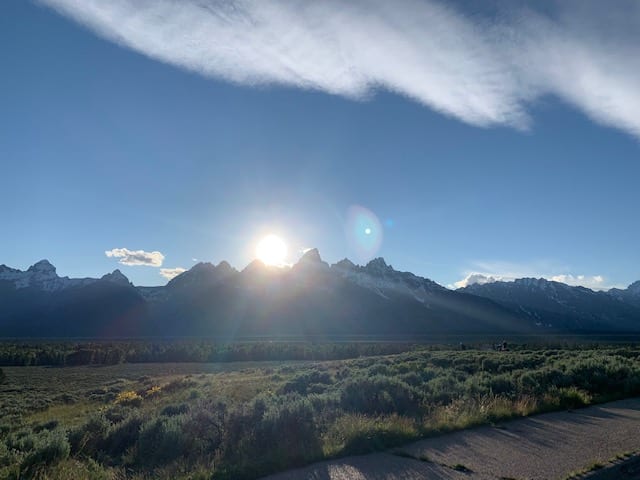
Where to Lodge When Planning a Trip to Yellowstone
Yellowstone offers lodges, RV camping sites, and tent camping sites. This national park opens lodging reservations 12 months in advance, and I recommend you book your lodging at this time if traveling during the busy summer months. Even booking 12 months ahead of time, our campsite options were limited. All lodges were closed while we were there due to the COVID pandemic, so I cannot offer much insight into those.
We decided to RV camp. If you RV camp, note that the park does not offer power or water hookups at the sites. If you tent camp, do not bring food into your tent or leave food in your car. The bears will find them. Campgrounds offer food storage boxes to keep bears out at each campsite. Campgrounds also provide restrooms, showers, and laundry services although showers were closed while we were there (gross!).
Yellowstone has a total of 12 campgrounds, and we stayed in 3 of them. We opted to stay 2 nights in each of these campsites: Grant Village, Canyon, and Bridge Bay Campgrounds. Bridge Bay was our favorite location because elk and bison roam freely through the site, and it has views of Yellowstone Lake. If you want to camp at Yellowstone, read How to Pick the Best Campground in Yellowstone.
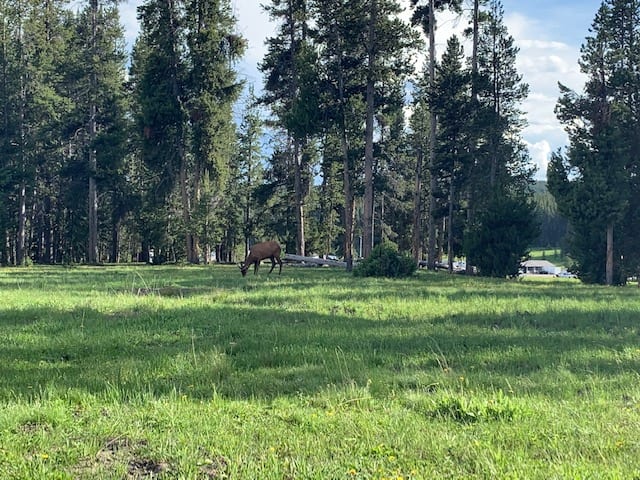

Know the Entry Fees When Planning a Trip to Yellowstone
Yellowstone has 5 entrances: North, Northeast, South, East, and West Entrances. Depending on the time of year, the wait to get into the park can be an hour or more. I recommend arriving early to the park or lodging inside to the park to avoid long lines at the entrance gates.
You should know planning a trip to Yellowstone that you will need to purchase a park pass to enter. The pass is $35 and is good for 7 consecutive days. Depending on how often you visit this park or all U.S. National Parks, you may want to consider purchasing an annual pass for just Yellowstone or an America the Beautiful park pass, which will allow you into all national parks for a year. Also, if you have a 4th grader in your household, you can get a family pass to the national parks that is good for a year. Find out more about that benefit here.
Know When to Visit While Planning a Trip to Yellowstone
June, July, and August are the months with the largest crowds in Yellowstone for obvious reasons. Kids are out of school for the summer, and the weather is warm. You should know before planning a trip to Yellowstone to arrive early and/or come late. We noticed the crowds were virtually nonexistent after 6pm. In the summer, the sun sets around 9pm, so this still leaves you plenty of time to see the sights without crowds.
April – May and September – October are shoulder months. During this time, the crowds are significantly fewer. Spring and fall are great times to see wildlife. In the Spring, animal babies frolic in the meadows, and the fall is mating season.
Winters in Yellowstone are cold and snowy. Only the north entrance is open to vehicles in the winter. Also, most facilities will be closed by December. Traveling to Yellowstone during this time is difficult but can be very beautiful blanketed in snow.
Know the Weather when Planning a Trip to Yellowstone
Summers in Yellowstone have the most comfortable weather with the highs in the lower 70s (F) and lows in the lower 40s (F). Days are very long in the summer months with the sun rising before 6am and setting around 9pm.
Spring and Fall seasons in Yellowstone are a bit cooler than the summer months. The highs are generally in the 40s-50s (F), and the lows are in the 20s (F). Days are still fairly long with the sunrise in the 6 o’clock hour and sunset in the 8 o’clock hour.
Winters can be brutal with heavy snowfall and lows in the single digits. The days are also relatively shorter. The shortest day of the year has a sunrise time around 8am and sunset before 5pm.
The weather can vary significantly no matter what time of year you plan on visiting the park, so make sure to check weather predictions just before arriving. Also, plan on wearing layers and bring rain gear to combat weather changes.
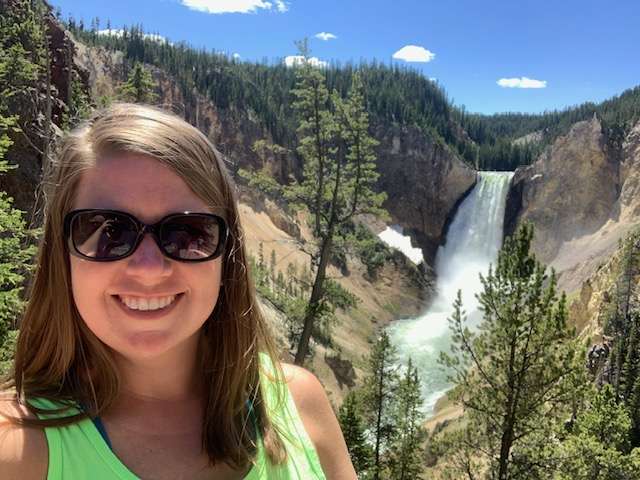
Know Where to Potty When Planning a Trip to Yellowstone
Restrooms are available everywhere. I have never seen a national park or recreational area with more restrooms available, which is super convenient! You can find flushable toilets and/or pit toilets at all major sights, trailheads, and random pullouts on roads. Even more impressive was that the restrooms were clean.
Unplug Whether You Like It or Not
You should know before planning a trip to Yellowstone that cell service is practically nonexistent. At the time of our vacation, there was no free WiFi available anywhere in the park. While sometimes it is nice to unplug, it is not without its challenges. We rely on our cell phones so much that you may not even realize what this means. I highly recommend that you print out all your travel documents, maps, trail information prior to arriving. There are also apps, such as Chimani, that allow you to download park maps and trail information, so you can access the information offline. Otherwise, you will have no way of looking up the information that you need. Also, if the park ranger does not offer you a map at the entrance, make sure to ask for one.
Be Prepared to Walk A Lot Before Going to Yellowstone
In this national park, you spend a lot of time in the car and most sights are located near the roads. However, you should know before planning a trip to Yellowstone that you will still do a lot of walking. This surprised me because we did not do many “traditional” hikes. However, the boardwalks over the geysers extend for miles. I was averaging 12,000 – 15,000 steps on days without “traditional” hikes, which equates to 6 – 8 miles. On the day, we hiked the Seven Mile Hole Trail, I walked over 26,000 steps. Make sure to bring comfortable walking or hiking shoes!
What to Pack When Planning a Trip to Yellowstone
Join my mailing list to receive the ultimate packing guide, but here are some things that I feel are especially important for you to bring to Yellowstone.
- Bug Spray – The mosquitoes are bad in Yellowstone, and you will need bug spray to keep your sanity.
- Bear Spray – Bears are rampant in Yellowstone and can walk up on you at anytime. Arm yourself with bear spray. The stores in Yellowstone sell bear spray if you do not bring your own.
- Rain Gear – A rainstorm can come out of no where, so you will want to pack your rain gear in your car or backpack every time you go out.
- Clothing – Duh! What I mean is pack various types of clothing, so you can dress in layers. In the mornings, I wore a tank top, long sleeve t-shirt, and a hoodie to keep warm. By mid-day, I was down to just the tank top to keep cool. Layers are important!
- Comfortable Shoes – You will be walking a lot, so pack comfortable shoes.
Safety in Yellowstone
You should know before planning a trip to Yellowstone that wildlife is abundant and roam all parts of the park. This is their home, and we need to respect that. Keep a safe distance from animals. Yellowstone officials recommend to stay 100 yards away from bears and wolves and 25 yards away from all other animals.
Anytime visiting this area, take extra precautions when hiking in remote areas. Odds are you will not use it, but it is a good idea to carry bear spray on hikes. Bears usually only attack when they are startled or protecting their young. It is also a good idea to travel in groups of 3 and make noise while hiking.
In the 6 days we were in Yellowstone, a woman hiking alone was attacked by a grizzly bear and another woman was attacked by a bison when she got too close. Both of these attacks most likely could have been prevented if they followed Yellowstone’s safety guidelines.
Also remember that animals have the right-of-way in Yellowstone. If a bison decides to take a nap in the middle of the road, then sit back and relax. Because you will be sitting there until he wakes up. Speaking of roads, make sure to follow the posted speed limits for the safety of pedestrians and wildlife. Animals in Yellowstone are very large beasts and can dart in front of you at a moment’s notice. This could wreak havoc for your vehicle and your family members inside.
In addition to wildlife safety, be sure to stay on boardwalks and trails, especially in the thermal areas. The grounds are unstable and the thermal spots are lethally hot, which is a bad combination.


Leave No Trace
It should go without saying, but for some reason it is not. Do not leave trash or food out. This is very dangerous for the wildlife and the ecosystem. It is also dangerous for you if you leave food out or feed animals as they can become aggressive.
In addition, put out campfires completely. Wildfires are devastating to any national park or forest. Fires can become out of control and burn for months.

Be Patient While Visiting Yellowstone
Weather can be unpredictable, and roads may be closed due to scheduled construction or wildlife obstructions. Also, trails may unexpectedly shut down due to wildlife activity. Parking areas may be full causing you to have to change your plans for the day. These are all normal events for Yellowstone. But add COVID issues into the mix, and these occurrences can cause extra frustrations. Just remember to be patient and flexible, and you are guaranteed to have a great time in the park! For information on park closures and safety guidelines, visit the Yellowstone National Park website here.
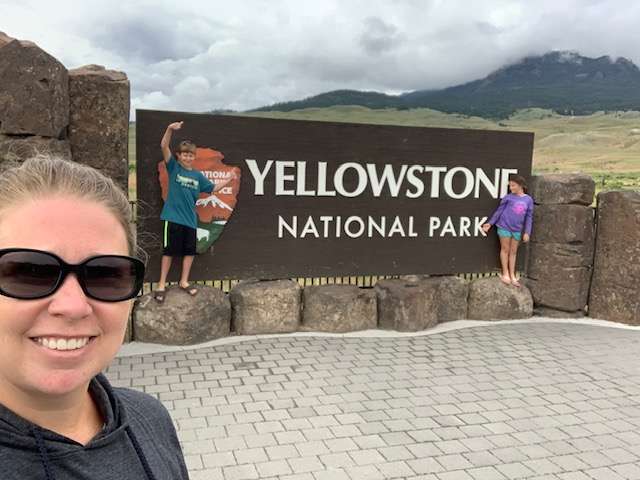
You May Also Be Interested In
How to Roam Yellowstone in 6 Days
How to Spend 2 Days in Grand Teton National Park
Glacier National Park When You Can’t Access Going-to-the-Sun Road
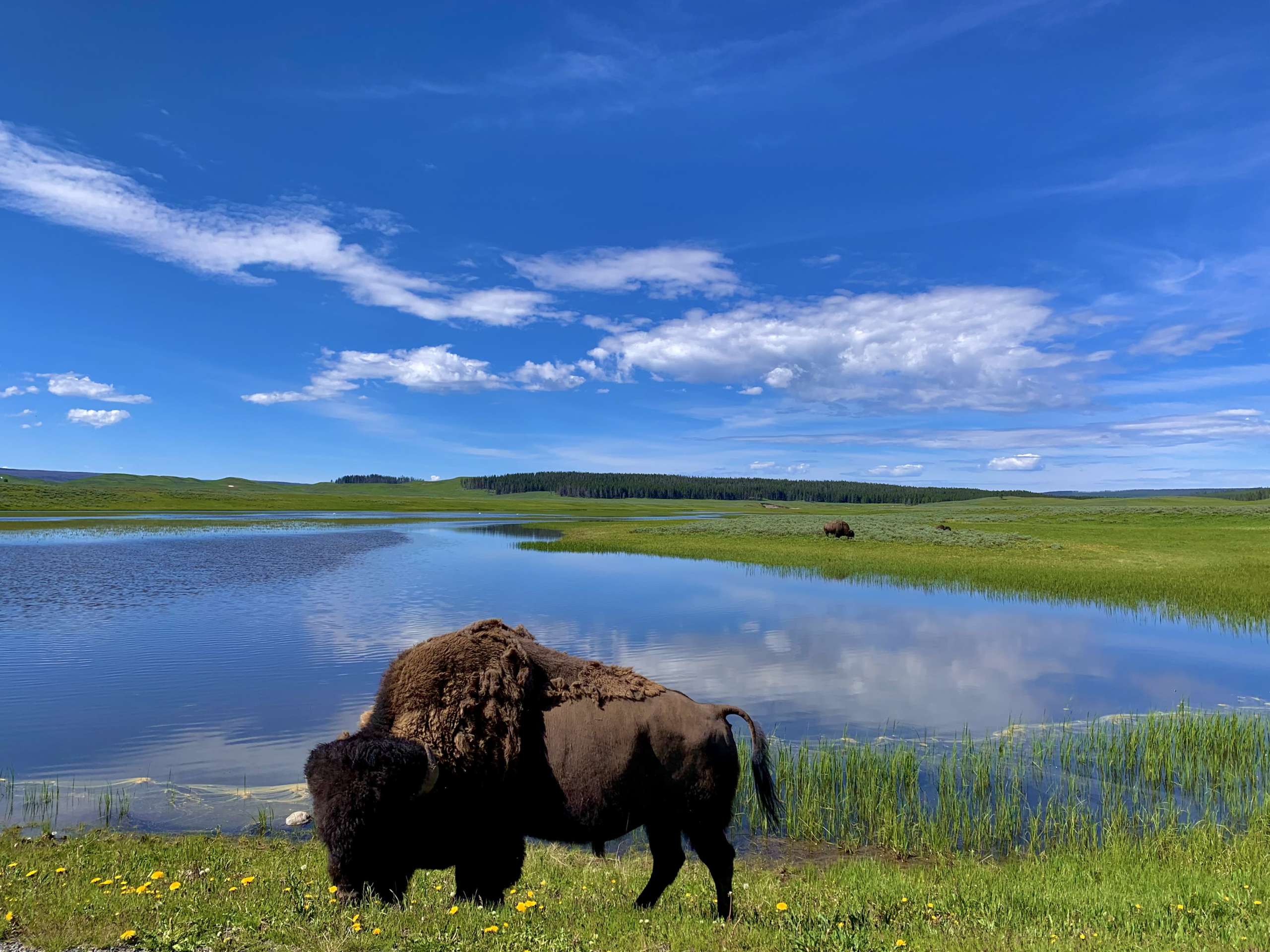
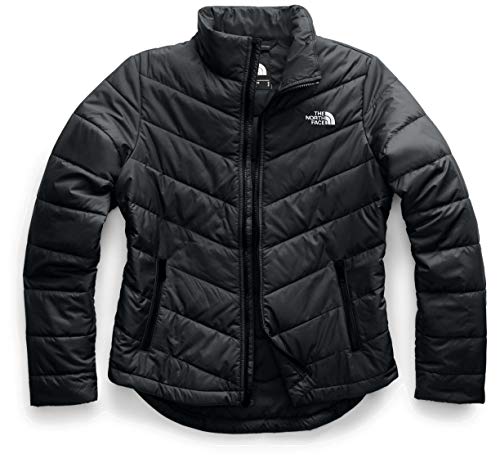
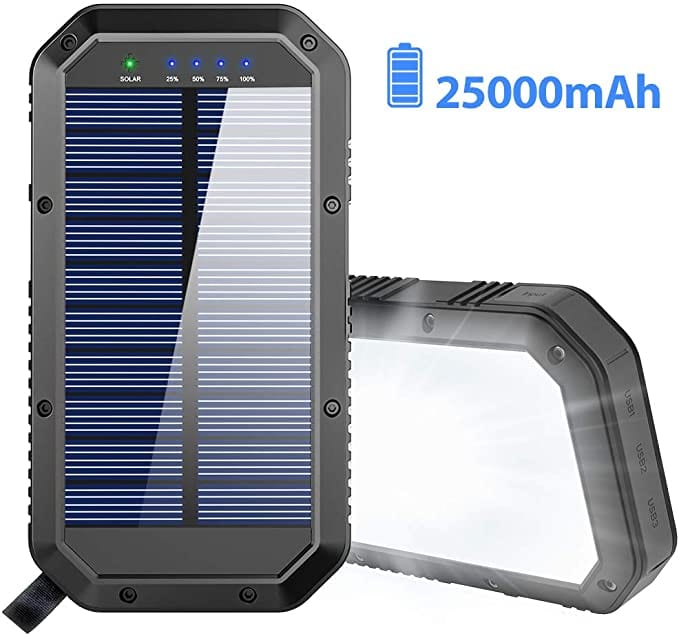
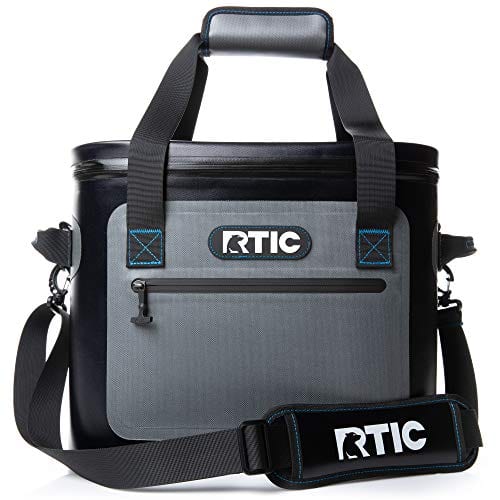


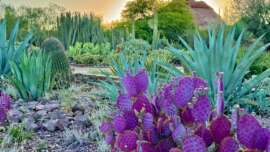
2 Comments
Jackie Hunt
July 13, 2020 1:31 pmGreat report Krystal. Yellowstone is one of my favorite places to visit for photography, I’ve been there 7 or 8 times now and will still go back. Another good spot to stay if you can’t get lodging in the park is West Yellowstone, nice little town with all the necessities and close to the entrance.
Comments are closed.